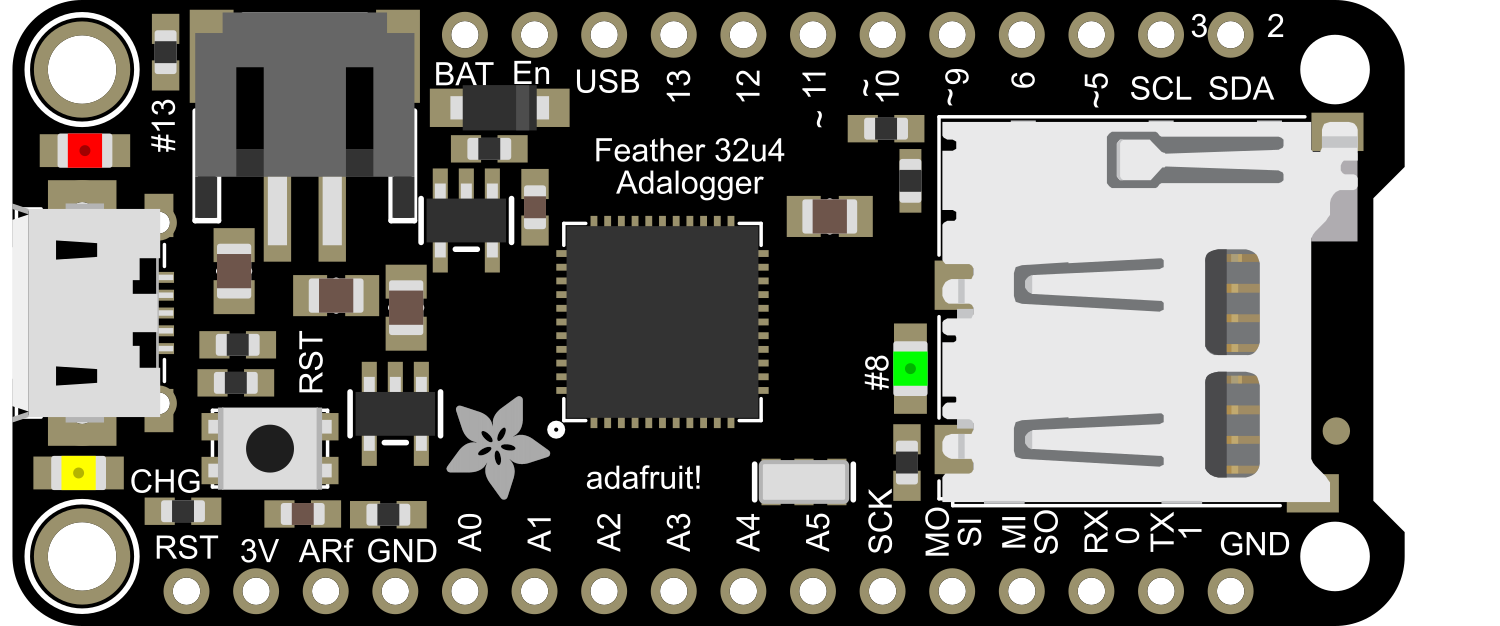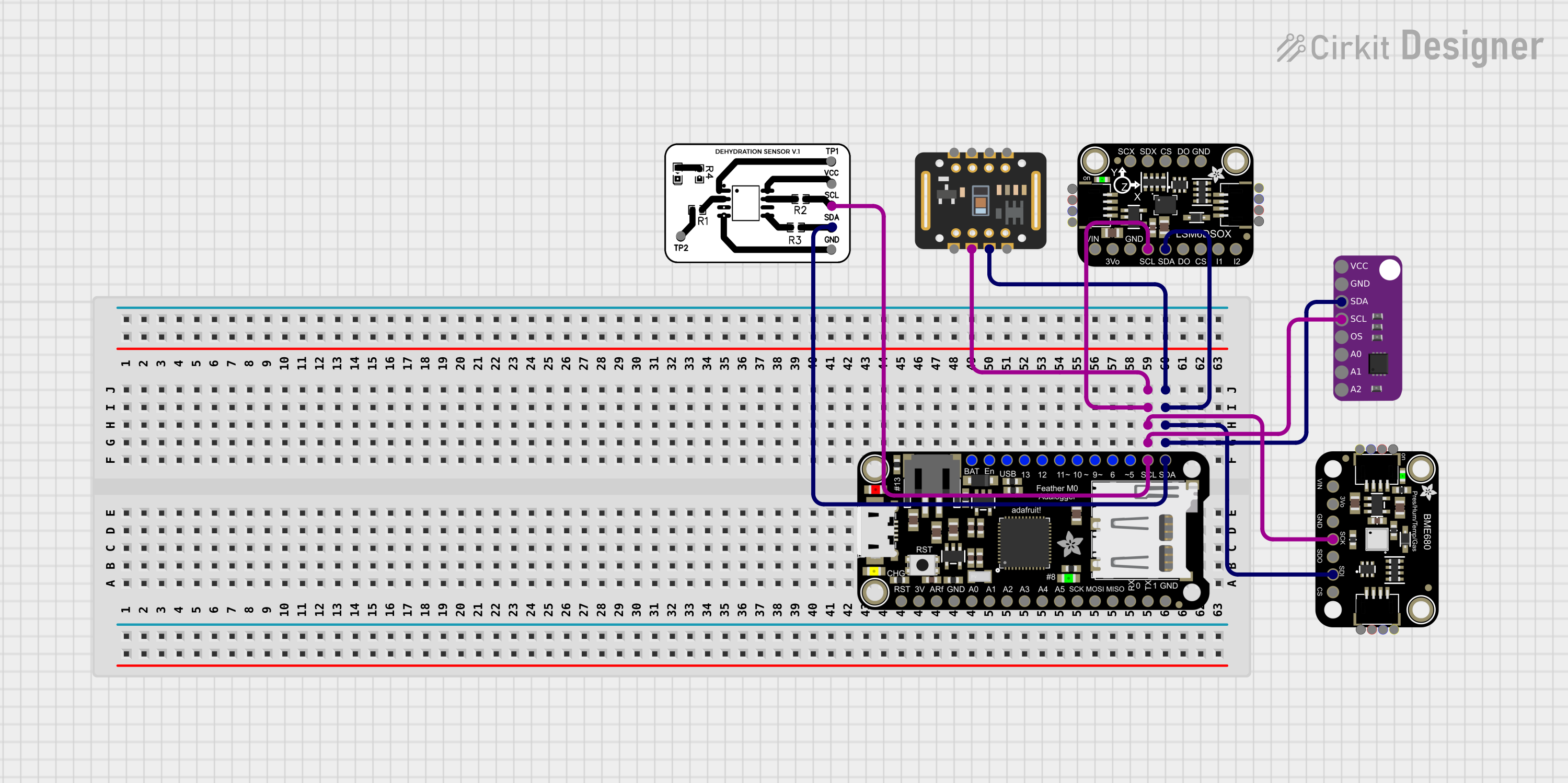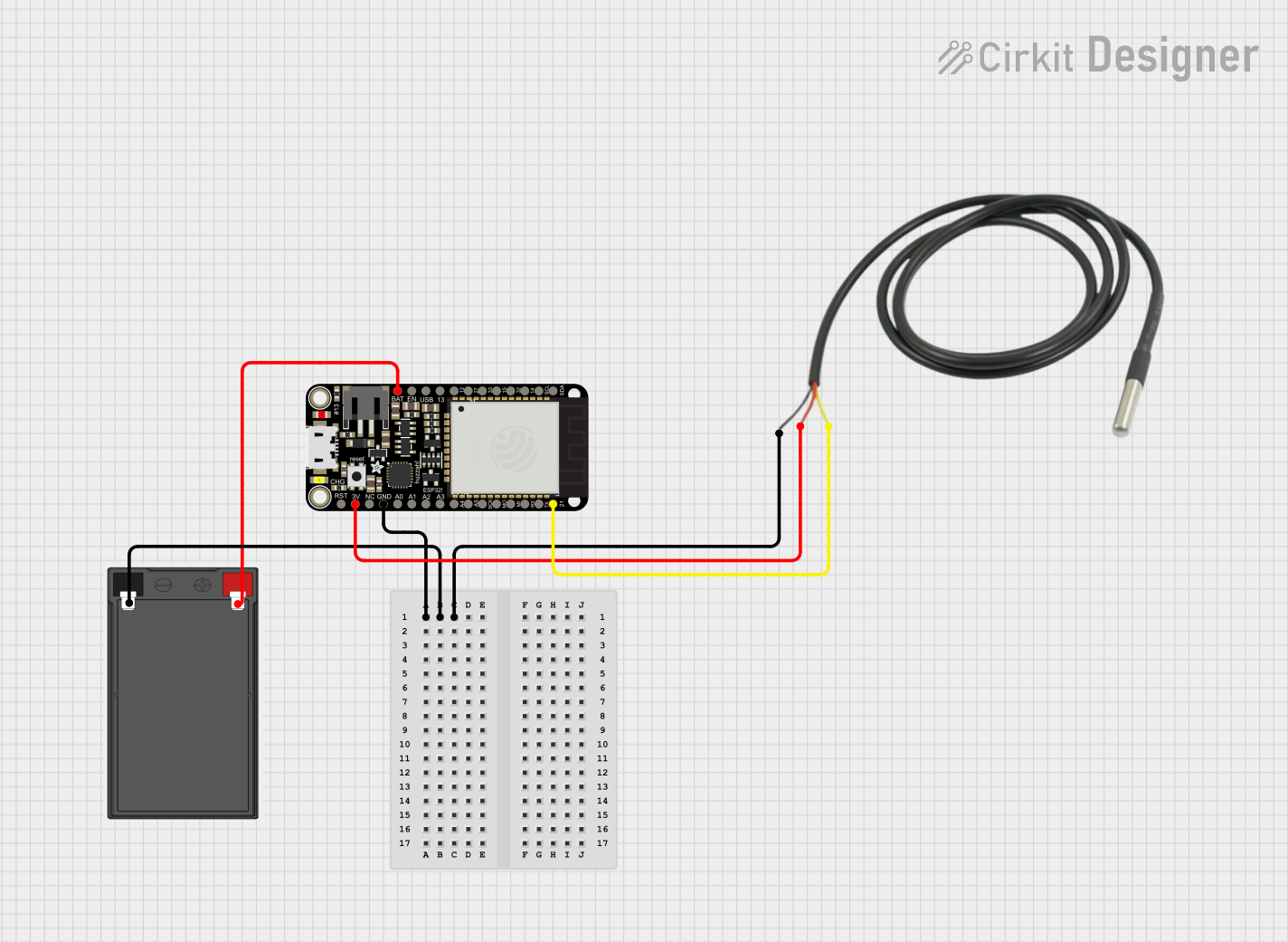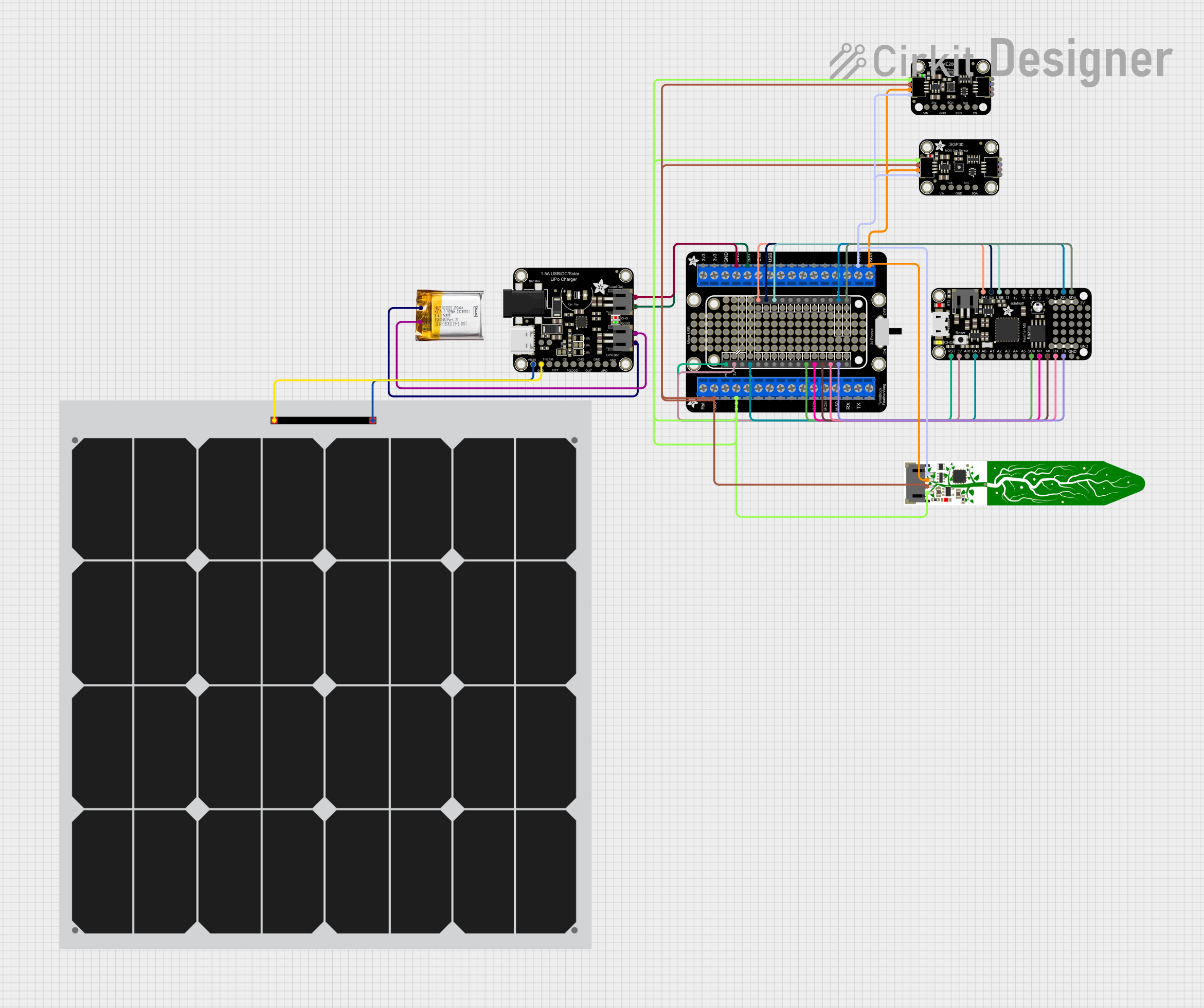
How to Use Adafruit Feather 32u4 Adalogger: Examples, Pinouts, and Specs

 Design with Adafruit Feather 32u4 Adalogger in Cirkit Designer
Design with Adafruit Feather 32u4 Adalogger in Cirkit DesignerIntroduction
The Adafruit Feather 32u4 Adalogger is a versatile and portable development board that combines the power of the ATmega32u4 microcontroller with the convenience of an onboard microSD card slot for data logging. This board is part of the Feather ecosystem, designed by Adafruit for ease of use and flexibility. It is ideal for projects that require data collection, such as environmental monitoring, experimental data logging, or even as a tiny, stand-alone GPS logger.
Explore Projects Built with Adafruit Feather 32u4 Adalogger

 Open Project in Cirkit Designer
Open Project in Cirkit Designer
 Open Project in Cirkit Designer
Open Project in Cirkit Designer
 Open Project in Cirkit Designer
Open Project in Cirkit Designer
 Open Project in Cirkit Designer
Open Project in Cirkit DesignerExplore Projects Built with Adafruit Feather 32u4 Adalogger

 Open Project in Cirkit Designer
Open Project in Cirkit Designer
 Open Project in Cirkit Designer
Open Project in Cirkit Designer
 Open Project in Cirkit Designer
Open Project in Cirkit Designer
 Open Project in Cirkit Designer
Open Project in Cirkit DesignerCommon Applications and Use Cases
- Environmental data logging (temperature, humidity, pressure)
- GPS tracking and logging
- Wearable devices
- Educational projects and prototyping
- IoT and smart home devices
Technical Specifications
Key Technical Details
- Microcontroller: ATmega32u4
- Operating Voltage: 3.3V
- Input Voltage: 3.7-6V via battery and up to 12V via the USB or VIN pin
- Clock Speed: 8 MHz
- Digital I/O Pins: 20
- PWM Channels: 7
- Analog Input Channels: 12
- DC Current per I/O Pin: 40 mA
- Flash Memory: 32 KB (ATmega32u4) of which 4 KB used by bootloader
- SRAM: 2.5 KB (ATmega32u4)
- EEPROM: 1 KB (ATmega32u4)
- MicroSD card slot for data logging
Pin Configuration and Descriptions
| Pin Number | Function | Description |
|---|---|---|
| 1 | GND | Ground |
| 2 | BAT | Battery + |
| 3 | EN | Enable pin for the 3.3V regulator |
| 4 | USB | USB data- |
| 5 | USB | USB data+ |
| 6-13 | Digital I/O | Digital pins, can also serve as PWM, SPI, I2C |
| 14-19 | Analog Input | Analog pins, can also serve as digital I/O |
| 20 | AREF | Analog reference voltage for the ADC |
| 21 | SCK | SPI clock |
| 22 | MISO | SPI Master In Slave Out |
| 23 | MOSI | SPI Master Out Slave In |
| 24 | SS | SPI Slave Select |
| 25 | RXLED | RX LED, lights up when the USB port receives data |
| 26 | TXLED | TX LED, lights up when the USB port sends data |
| 27 | SDA | I2C Data |
| 28 | SCL | I2C Clock |
| 29 | RST | Reset pin |
Usage Instructions
How to Use the Component in a Circuit
- Powering the Adalogger: You can power the Adalogger through the USB connection, a LiPo battery, or an external power supply connected to the VIN pin.
- Connecting Sensors: Use the digital and analog pins to connect sensors. Ensure that the sensors are compatible with the 3.3V logic level.
- Data Logging: Insert a formatted microSD card into the slot. Use the onboard SD library to write data to the card.
- Programming: The board is programmable via the Arduino IDE. Select "Adafruit Feather 32u4" from the Boards menu.
Important Considerations and Best Practices
- Always ensure that the power supply is within the specified range to prevent damage.
- When using the microSD card slot, make sure the card is formatted correctly (FAT16 or FAT32).
- Disconnect the battery when programming the board via USB to avoid power conflicts.
- Use a regulated 3.3V supply when connecting external components to prevent damage to the board.
Example Code for Arduino UNO
#include <SPI.h>
#include <SD.h>
File dataFile;
void setup() {
// Open serial communications and wait for port to open:
Serial.begin(9600);
while (!Serial) {
; // Wait for serial port to connect. Needed for native USB port only
}
Serial.print("Initializing SD card...");
if (!SD.begin(4)) { // Make sure to use the correct chip select pin
Serial.println("initialization failed!");
return;
}
Serial.println("initialization done.");
// Create or open the data file
dataFile = SD.open("datalog.txt", FILE_WRITE);
// If the file is available, write to it:
if (dataFile) {
dataFile.println("Logging data...");
dataFile.close(); // Make sure to close the file when you're done
Serial.println("Data written.");
} else {
// If the file isn't open, pop up an error:
Serial.println("error opening datalog.txt");
}
}
void loop() {
// Nothing here for now.
}
Troubleshooting and FAQs
Common Issues Users Might Face
- SD Card Not Recognized: Ensure the card is properly inserted and formatted to FAT16 or FAT32.
- Board Not Detected by Computer: Check the USB cable and drivers. Press the reset button twice quickly to enter bootloader mode.
- Inaccurate Sensor Readings: Verify that the sensor is compatible with 3.3V logic and is connected correctly.
Solutions and Tips for Troubleshooting
- If the SD card is not working, try using another card or reformatting the existing one.
- For driver issues, ensure you have the latest drivers installed for the board.
- Double-check all connections and solder joints for continuity and shorts.
- Consult the Adafruit forums and guides for additional support.
FAQs
Q: Can I power the Adalogger with a 5V supply? A: No, the operating voltage is 3.3V. You must use a regulated 3.3V supply or the onboard USB connection.
Q: How do I program the Adalogger? A: You can program it using the Arduino IDE. Select the "Adafruit Feather 32u4" board from the Boards menu.
Q: What is the maximum size of the SD card that can be used? A: The Adalogger supports microSD cards up to 32GB in size.
Q: Can I use the Adalogger for real-time clock (RTC) applications? A: Yes, the Adalogger has a built-in RTC. You'll need to add a 3V coin cell battery to the board to keep the clock running when power is disconnected.